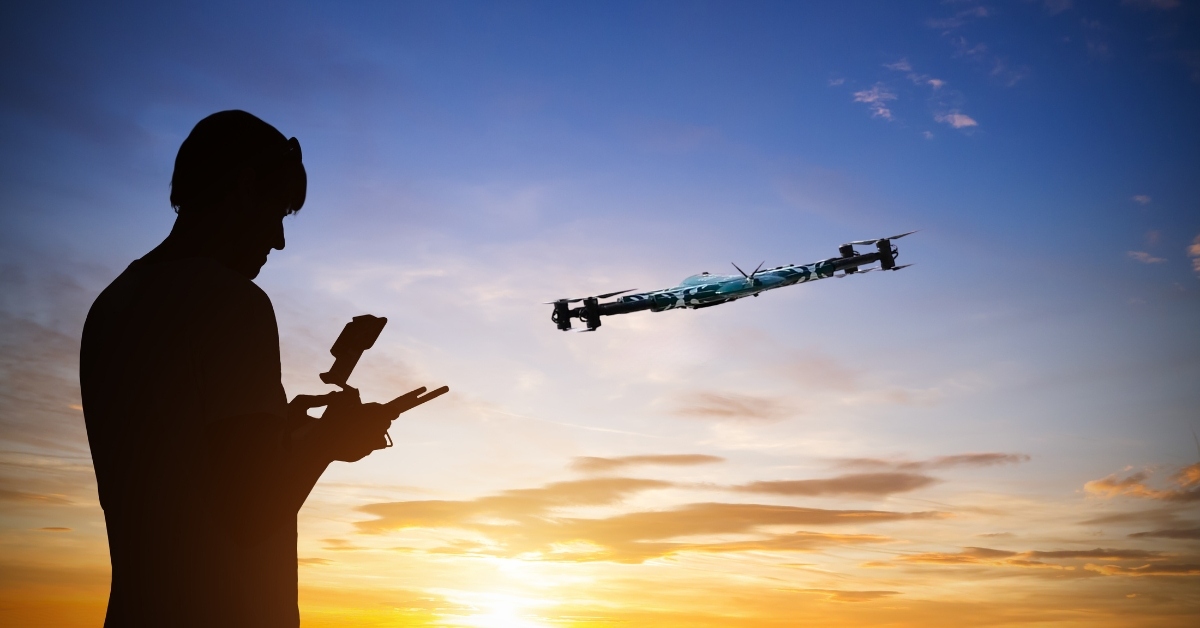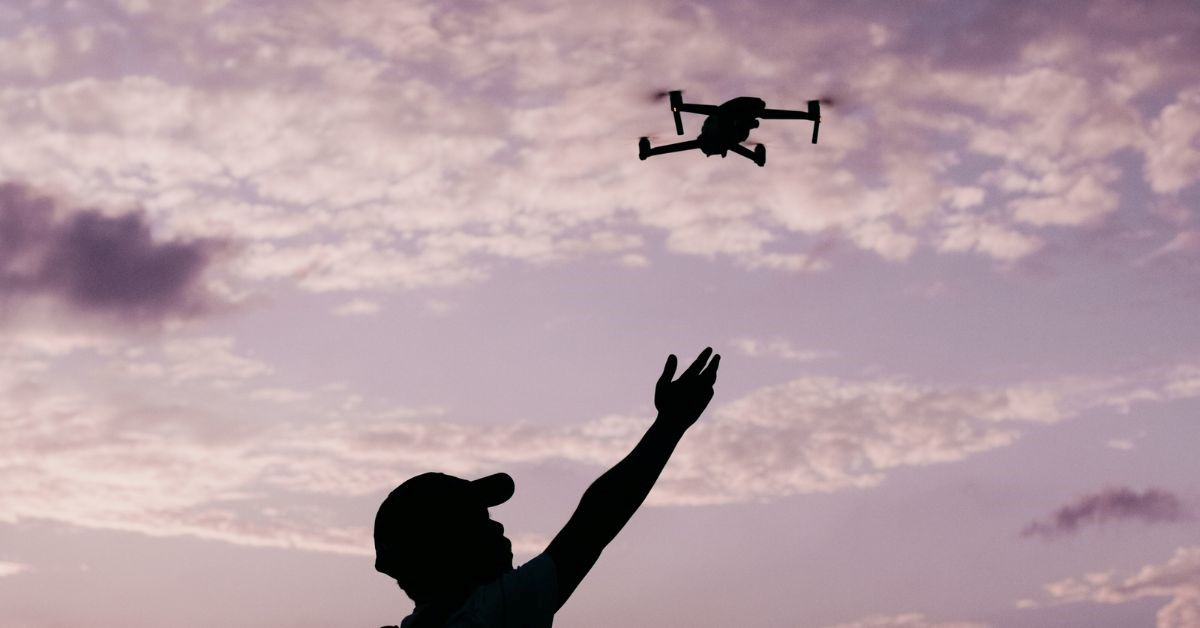Guide to Piloting the Best Commercial Drones

Drone pilot is becoming more commonplace in our daily lives and is growing in quantity and complexity. The drone industry is expanding quickly and greatly due to its commercial use. The exponential growth of the retail UAV sector also brought the emergence of a new profession. Certification and appropriate training are essential for operating the best commercial drones. Drone operators can explore job prospects by obtaining a qualification when they utilize drones in an official capacity. Certified UAV pilots are emerging as a demand of numerous industries as more commercial drones are used in their trade.
This article will discuss the benefits and significance of professional drone training and certification.
Current Drone Laws and Their Impact on Commercial Use
The Federal Aviation Administration’s (FAA) privacy and safety rules caused delays in the more significant launch of commercial UAV services. The FAA has strict guidelines in regulating drone use for recreational and commercial purposes. These laws are strict and apparent for non–military operators.
On occasion, the FAA permitted the use of commercial UAV testing. Operators with the best commercial drones must adhere to the agency’s regulations.
FAA Highlights Key Rules for UAV Operations
A flight pilot shall at all times directly observe a drone in flight without using any gadgets or glasses. From start to finish, hazards or impediments should be noticed as the observer follows the flight. The FAA established UAV guidelines and safety to improve flight safety, which benefits all drone pilots, regardless of skill level. Above all, the law requires drone safety.
The FAA changed some regulations over the years as drone technology advanced. The organization recognizes these are “incremental” steps in allowing unmanned drones to fly in US airspace. An example is the 2025 rule change, which enables drones to fly over a pre-planned route that crosses over people. However, the route is only allowed at night after informing the nearby population that an event will occur.
Getting Into Commercial UAV Piloting
Becoming a commercial drone pilot requires several requirements that an aspiring operator must meet. Drone pilots must frequently run cameras and exchange data regarding the operation with businesses and customers. Drone operators must be in a position to finish flight logs, have a look at and troubleshoot drone equipment, and check climate forecasts
Seven Steps in Becoming a Drone Pilot
Embarking on the journey to become a drone pilot is an exciting venture that marries the thrill of flight with cutting-edge technology. The knowledge of drone piloting provides ideas about innovative projects, opportunity of entertainment and offer information concerning commercial purposes. It is a source of wealth of opportunities. We have described seven crucial steps leading to your initial interest in becoming a proficient drone operator.
Purchase the Right Drone
Aspiring drone pilots require the fine model to work with. Getting the exceptional industrial drone, for starters, is a priority. Investing in a robust drone that develops with the pilot’s knowledge is right. It’s fantastic if an aspiring professional operator is aware of their UAV inner and out. Flight simulators are also helpful for gaining experience with professional drone flying. However, simulators can only get very far. A drone pilot will eventually operate the actual machine.
There are countless UAV models in the market. It’s essential to research which one complements the would-be pilot’s requirements. Commercial drones buying guides indicate that advanced UAVs are pricier than others. These drones require a considerable investment. It’s better to be familiar with the tools of the trade quickly.
Practice Makes Perfect
It’s best to start practicing the basic flight skills. Novice drone pilots might get overwhelmed with the information and techniques they need to learn. As beginners, it’s essential to remember it takes time and practice to be an efficient operator.
Practicing a few flight drills is a way to overcome anxiety when piloting a pricey drone at first. Sophisticated commercial drones likely offer more features to make flying straightforward. Listed below are basic drone flight drills:
- Take off
- Hovering
- Forward pitch
- Backward pitch
- Left and right roll
- Flying in a circle
- Flying in a square
- Continuous flight
- Steady flight
- Rotating or pivoting
- Landing
After mastering these foundational skills, operators can practice increasingly advanced flight maneuvers. It is important to know how to work the control properly and the drone’s ability to take a flight and its settings.
Enroll in Professional Drone Flying Course
Flying a drone for amusement is easy, although commercial UAV flying for business needs extensive knowledge. Most professional fliers are highly trained and certified; this makes them stand out from recreation fliers. All the drone pilots are FAA certified.
Such comprehensive drone training is valuable, as it imparts knowledge that is useful to make operations become safer and faster. Our experience and training are guaranteed in the observance of flight regulations and protocols while flying a commercial drone under control area, knowing the weather and radio frequencies. The understanding of the restrictions, controlled airspace, weather, and radio frequencies that a professional commercial drone pilot requires—apart from skills and knowledge—a professional drone training program will help in passing the FAA Part 107 exam
Clear the FAA Test and Get A License
An FAA drone pilot’s license is a prerequisite for legally operating a drone in the US. Drone pilots in different countries have similar organizations that grant licenses. The procedure varies based on the countries’ regulations on the use of commercial UAVs. The hardest part of the process is usually passing the Aeronautical Knowledge Test. Specialist knowledge is necessary for the knowledge test. The FAA offers free practice tests and study guides to assist with the Part 107 exam preparation.
The following FAA requirements assist drone users in getting the most out of the best commercial drones: A candidate must be at least 16 years old to fly a commercial UAV. They can obtain a DMV driver’s license. Pass the Unmanned Aircraft General or UAG test (Part 107 Aeronautical Knowledge Test). Operators can apply online to the FAA for a Remote Pilot Certificate to obtain a temporary certificate. It will take six to eight weeks to receive the permanent certificate.
Pick a Specialization
Picking a specialization allows a drone pilot to focus on one vital feature. Drone specialization is optional. However, it’s essential to consider. Professional drone piloting demands specialization to be a successful job. It doesn’t mean purchasing the best commercial drone. Instead, it’s best to focus on one area to make the pilot and the drone highly valuable.
Listed below are industries in which a commercial UAV pilot can specialize:
- Conducting surveys
- Real Estate
- Marketing
- Film production
- Photography
- Construction
- Safety and Security
- Insurance
- UAV Agriculture
Drone Insurance
Getting the right kind and amount of insurance is an essential first step toward becoming a professional drone operator. It seems daunting to ensure a drone. However, it’s a necessary investment to guarantee the pilot and business have proper security.
Although United States law does not require drone insurance, it’s still valuable. Commercial UAV insurance covers the hazards of using drones for photography and producing media. In addition to covering the difficulty , removable payload, and parts, it also includes specialized aviation liability. Incidents with drones tend to be caused by uncontrollable circumstances, pilot error, or technical failure. Accidents can still happen even with the best commercial drones and a licensed and experienced UAV operator.
Recognize Waivers
An official FAA document, a waiver, authorizes specific aircraft operations beyond a rule’s scope. Commercial UAV pilots must follow their area’s regulations.
Drone Operations That Require Waivers
- In populated regions, operate a small drone from a moving vehicle or aircraft.
- Pilots fly a small drone during nighttime without any anti-collision lightning.
- Pilots must get a waiver when flying a small UAS without anti-collision lighting during civil twilight.
- Pilots operating an unmanned aerial system (sUAS) farther than the pilot’s unaided vision. Drone pilots require a waiver if they cannot discern the sUA’s position, altitude, attitude, and movement.
- UAV operators that use visual observers yet don’t adhere to all visible observer regulations.
- A waiver is essential when using just one remote pilot to control several tiny UAVs
Drone operations that involve:
- Flying more than 100 mph groundspeed
- More than 400 feet above the surface (AGL)
- With visibility of fewer than three statute miles
- 2,000 feet horizontally or 500 feet vertically from clouds
- 9. A waiver is also essential when flying over moving vehicles that do not adhere to categories 1, 2, 3, or 4.
Conclusion
There are numerous job options and opportunities available to drone pilots. Obtaining a Part 107 certificate requires a few hundred dollars of investment. However, acquiring an FAA certification goes a long way. There are a growing number of the best commercial drones in the market. The growth includes the increasing opportunities for drone pilots. ZenaDrone is one of the leading drone service providers in the market. Book a demo with the ZenaDrone team and seek consultation on how our models lead you to professional drone flying.
Contact Us
Thank you for your message. It has been sent.
Latest Posts
Social Profiles















